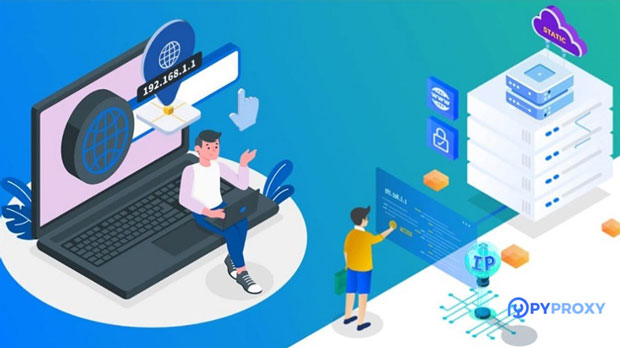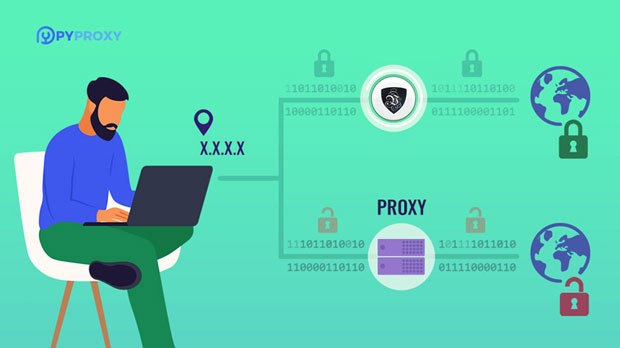Residential socks5 proxies have become an important tool in the gaming industry due to their ability to enhance online gaming experiences, offering gamers various benefits such as bypassing regional restrictions, reducing lag, and improving privacy and security. These proxies work by routing internet traffic through residential IP addresses, making it appear as though the user is accessing the internet from a different location. This functionality can be particularly useful in a gaming environment where access to specific content, servers, or services is often geographically restricted. The following sections will explore the numerous applications of Residential Socks5 proxies in the gaming world. What is Residential socks5 proxy?A Residential Socks5 proxy is a type of proxy server that routes internet traffic through a real residential IP address. Unlike traditional data center proxies, which use data center IPs, residential proxies are less likely to be detected by websites or services as they appear to originate from real, residential locations. This type of proxy is crucial in gaming because it provides a high degree of anonymity and security while maintaining a connection speed suitable for online gaming.The Socks5 protocol is known for its versatility, supporting various internet protocols and offering fast and secure transmission of data. This combination of residential IP addresses and the Socks5 protocol offers many advantages in gaming, as discussed in the following sections.Bypassing Geographical Restrictions and Accessing Regional ContentOne of the most significant advantages of Residential Socks5 proxies in the gaming world is their ability to bypass geographical restrictions. Many online games, particularly those with global servers, may restrict access based on a player’s location. For example, certain games may only be accessible in specific countries or regions, while content in the form of downloadable expansions or special in-game events may be limited to certain geographical areas.Using a Residential Socks5 proxy, gamers can access content and servers that are otherwise unavailable in their region. By masking the user’s real IP address and replacing it with one from a different geographical location, players can effectively access games, content, or events that would be otherwise restricted. This provides gamers with the opportunity to enjoy a broader range of gaming experiences, including access to exclusive releases or localized content that may not be available in their home country.Reducing Latency and Improving Connection StabilityOnline gaming requires a stable and fast internet connection to ensure a smooth and enjoyable experience. High latency, often caused by poor connections to gaming servers, can result in frustrating delays, lag, and disconnections. Residential Socks5 proxies can help reduce latency by offering a more stable and reliable route for internet traffic.When gamers connect to a game server through a proxy server located closer to the server’s region, they can reduce the time it takes for data to travel between the game client and server. This lower latency can lead to a smoother gaming experience, particularly for fast-paced games where quick reaction times are crucial. Additionally, Residential Socks5 proxies often bypass congested or throttled networks, offering gamers a more direct connection to gaming servers and reducing lag spikes.Enhancing Privacy and Security in Online GamingOnline gaming often involves the exchange of personal information, including account details, payment methods, and in-game purchases. As such, privacy and security are crucial considerations for gamers. Residential Socks5 proxies help enhance both privacy and security by masking the user’s real IP address, making it more difficult for third parties to track or monitor online activities.By hiding the actual location of a player, a Residential Socks5 proxy also helps protect them from DDoS (Distributed Denial of Service) attacks, which are commonly targeted at gamers, especially those competing in high-profile matches or tournaments. These attacks can overwhelm a player’s internet connection, causing lag, disconnects, or even rendering the player unable to access the game.Furthermore, Residential Socks5 proxies offer an additional layer of security when making online transactions or purchases in games. By encrypting the internet traffic, they protect sensitive information from being intercepted by hackers or malicious actors, ensuring that players' personal and financial data remain secure.Preventing Account Bans and Detection by Game ServersOnline gaming servers have increasingly sophisticated methods for detecting and blocking fraudulent activities, such as cheating, account farming, and botting. In some cases, players may attempt to use multiple accounts to gain advantages in the game, either by farming resources or cheating in competitive play. However, game servers can detect and block accounts that share the same IP address, which can lead to account bans or restrictions.By using Residential Socks5 proxies, gamers can disguise their IP address and make it appear as if they are accessing the game from different locations. This prevents game servers from detecting multiple accounts associated with the same player, reducing the risk of account bans. Furthermore, because Residential Socks5 proxies use legitimate residential IP addresses, they are less likely to be flagged or blocked by game servers, which typically target suspicious data center IP addresses.Accessing Beta Testing and Early ReleasesAnother application of Residential Socks5 proxies in the gaming industry is their ability to help gamers access beta testing and early releases of games. Game developers often release beta versions of games to a limited audience or specific geographical regions to test features or fix bugs before a global release. By using a Residential Socks5 proxy, players can access these beta versions by masking their real location and appearing as if they are from a region where the beta test is available.This can be particularly beneficial for gamers who wish to be among the first to experience a new game or provide feedback to developers. Additionally, certain games may offer exclusive early access to specific countries, and using a Residential Socks5 proxy enables players from other regions to bypass these limitations.ConclusionIn conclusion, Residential Socks5 proxies play a vital role in the gaming industry by providing numerous benefits, such as bypassing geographical restrictions, improving connection stability, enhancing privacy and security, preventing account bans, and accessing exclusive content. These proxies offer gamers a powerful tool for enhancing their online gaming experience and can be particularly beneficial in competitive or high-stakes gaming environments. By leveraging Residential Socks5 proxies, players can access a broader range of gaming content, enjoy a smoother connection, and ensure their personal information remains secure.
Jan 14, 2025
![arrow]()



















































